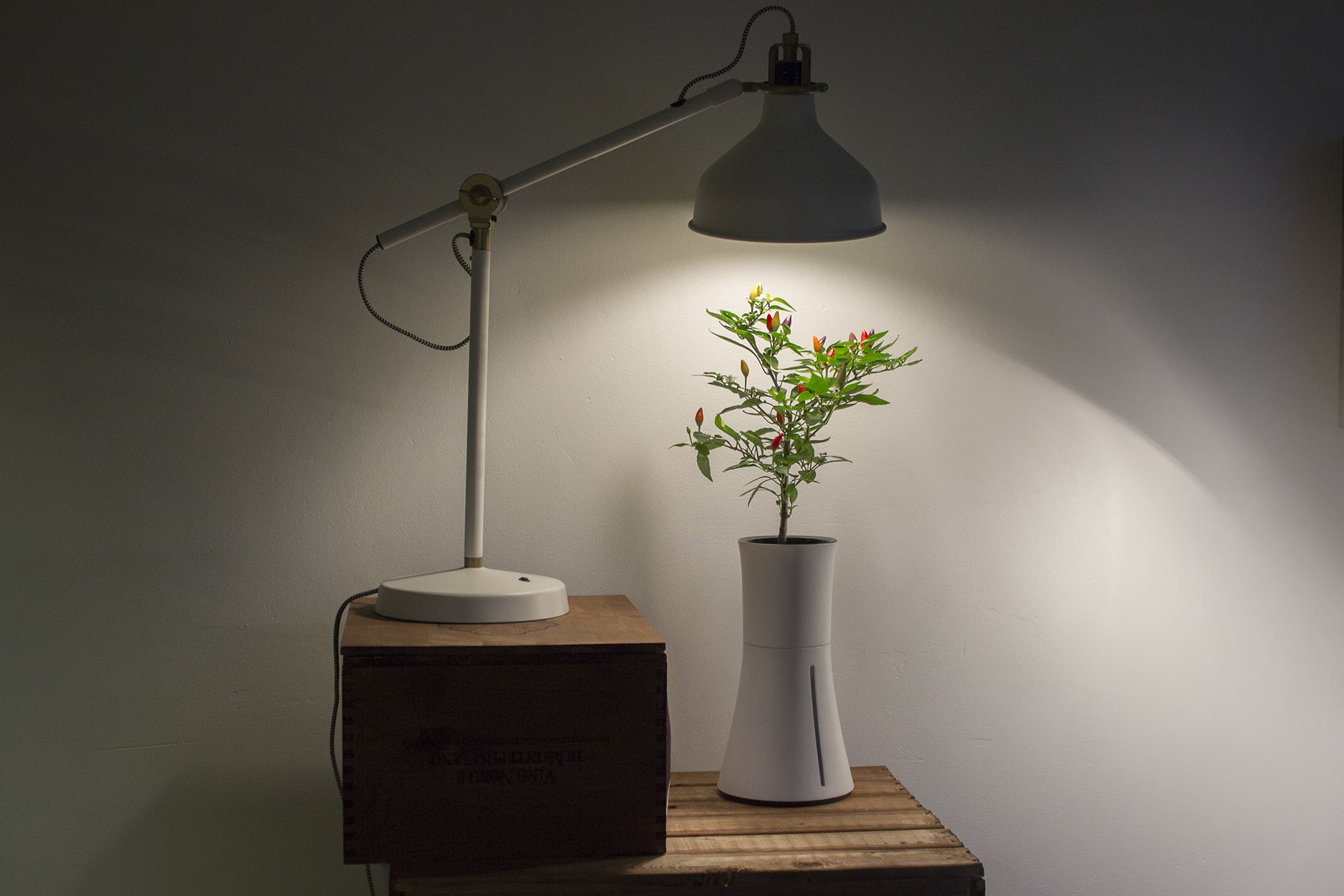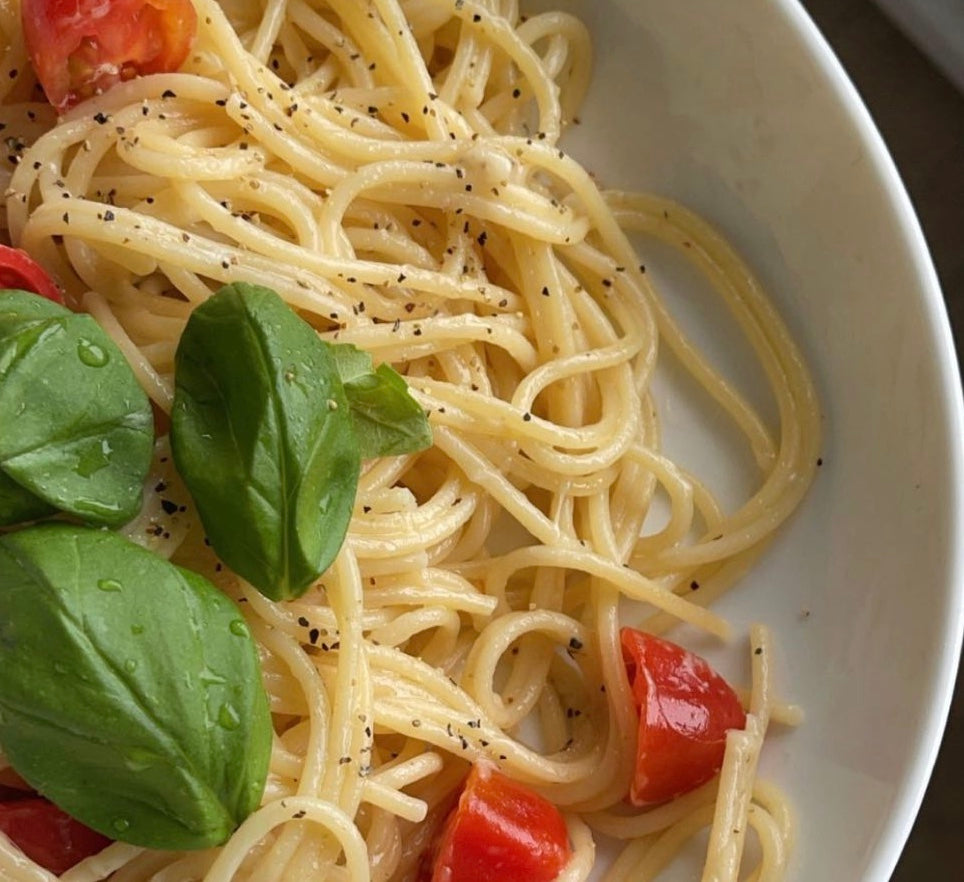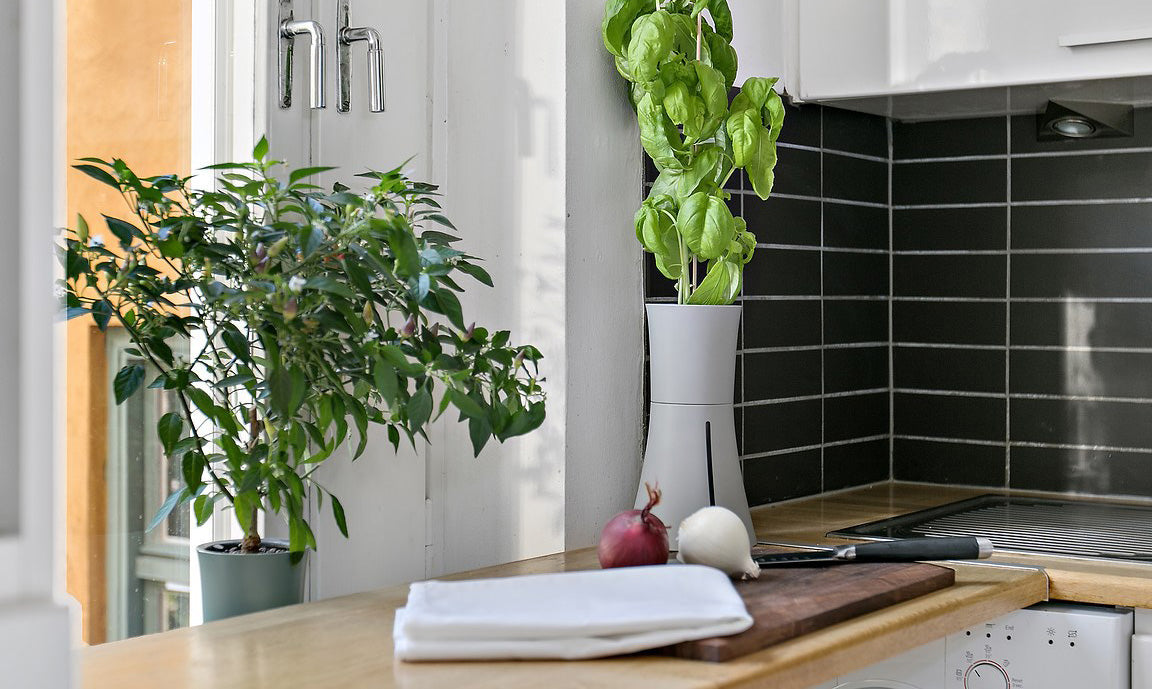How to grow chili peppers

Hot hot hot!
What makes chili growing so rewarding is that even a small amount of chili lasts a long time – in contrast to strawberries for instance, which you easily can eat faster than it grows. The active substance in chili is called capsaicin and tricks the tastebuds, mucous membranes and skin to believe it is hot. Birds, however, are not affected by it – a nifty solution for the plants to protects themselves against bugs and still using birds to spread the seeds.
Choosing a variety
Once you dive into the world of chili, you will find out that there are a lot of different types of chili. From yellow to black, from mild to super hot. Tall, short, big and small. The super hots can be quite impractical to use since you need so little of them to give an effect.

How to grow from a seed
Chili peppers are surprisingly easy to grow. It might not grow as fast as herbs or tomatoes, but in a few months you will get good yield provided you give them a lot of light.Planting the seeds
Put 3 seeds one cm (1/2”) below the surface of the growing medium in your Botanium. The seeds usually germinates in 1-2 weeks. If you have a cold window sill, you can speed up the germination by putting the Botanium at a warmer spot until It sprouts and need light.
Nutrients
Use 5 pipette (5 ml) nutrients for one full water tank.
Germination
Usually 2/3 of the seeds germinate. Keep the tallest seedling and carefully pull up the other ones. When growing chili, you don’t want more than one plant per Botanium to compete for water and light. Make sure the seedlings get a lot of light!
Flowering
In a few months you will have flowers all over the plant. Since it is growing indoors you need to pollinate it yourself (unless you happen to do indoor beekeeping 🙂 Chili is self pollinating, which means that one plant can pollinate itself. Touch each flower with a brush to spread the pollen. You can also shake the plant, but it is not as reliable. It is common for the first flowers to drop, so don’t worry if that happens. They can also drop if it doesn’t get enough light.
Harvesting
Most chillies turn red when they are ready to be picked. But there also varieties that are ripe when they are yellow, brown, orange, white and purple. That is why it is good to know how the chili you grow will look when it’s ripe. You can also feel the fruits carefully – when ripe, they turn softer.
Light
Chili peppers love to get a lot of sun. Using a grow lamp is a must If you plan to grow chili peppers during winter in the north.

Usage:
So now you have a ton of chili. Now what? Well, use it in soups, pasta arrabbiata or chili. Why not make a chili sauce? Actually, we recommend you to use it in everything!
- Cut the chillies in half and dry the then in an oven. Grind the dry flakes with a coffee grinder, and you’ll have a powder that lasts for a long time.
- Freeze the chilies and use a small grater to get instant chili flakes on your dish.
- Make a chili sauce.

Recommended varieties:
These are some chillies that we can recommend:
Numex twilight: Hot as habanero, compact and decorative.
Aji pinapple: Medium heat, tastes like tropical fruit.
CGN 21500: Judging by its shape, people doubt its even a chili. But trust us, it is HOT. And among of the tastiest chillies, too.
Black pearl: A very decorative and compact plant with its black leaves and red, cherry-like fruits.
Lila luzi: Compact and productive.





Just curious. I do not like or use chili peppers, but would like to grow sweet peppers. Is this possible? Can I grow peas or green beans, as well, in the Botanium?
Leave a comment